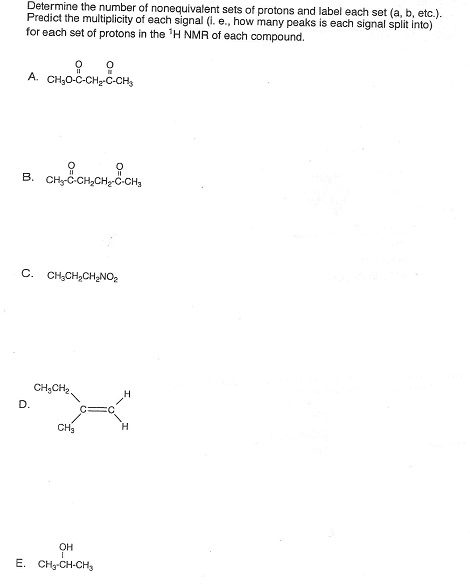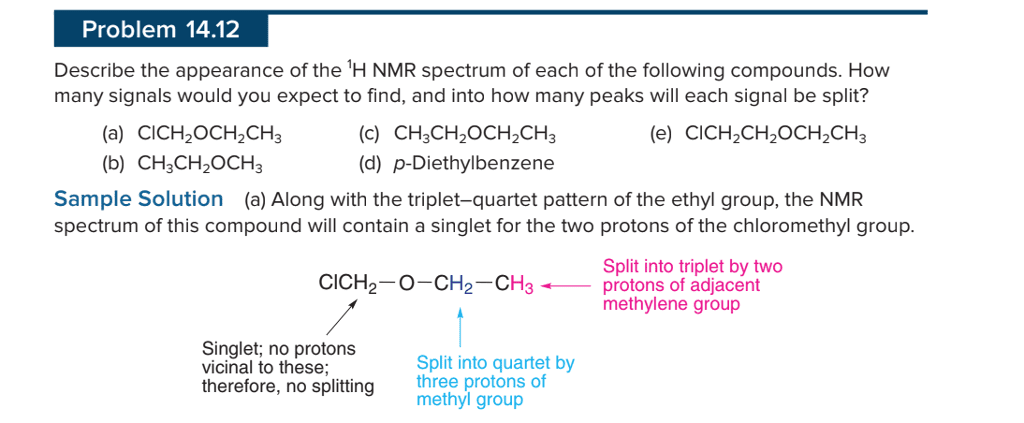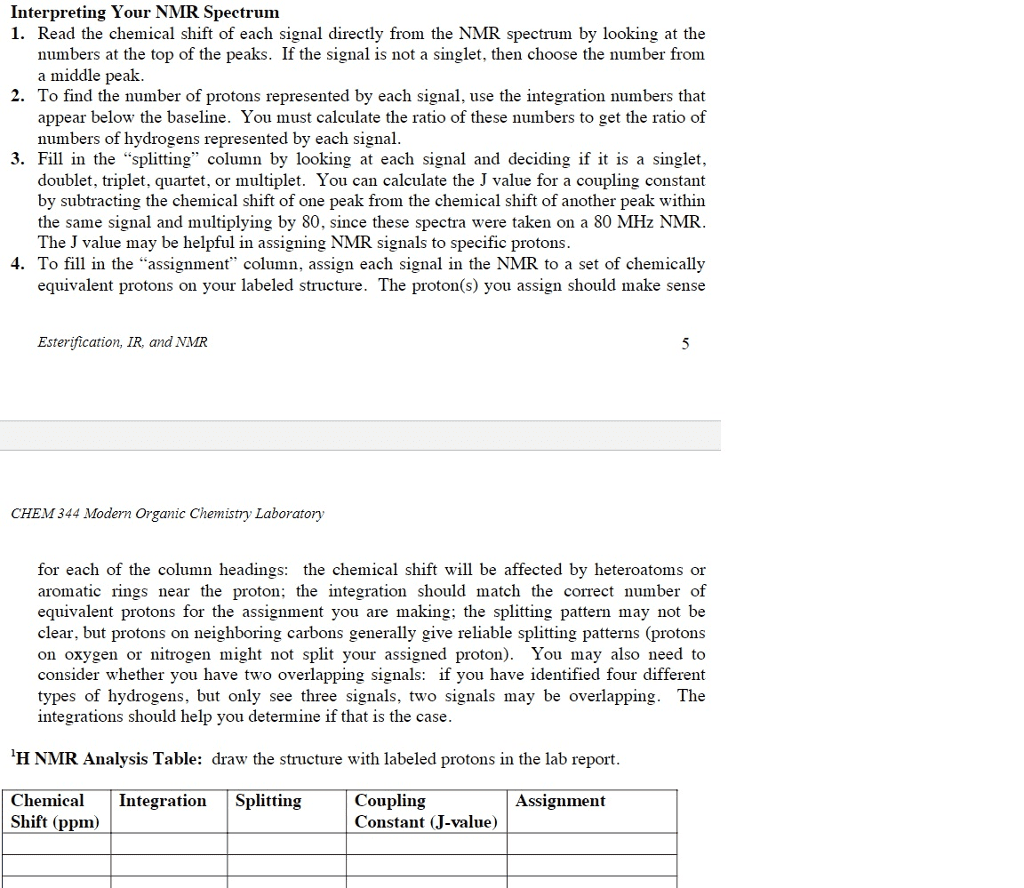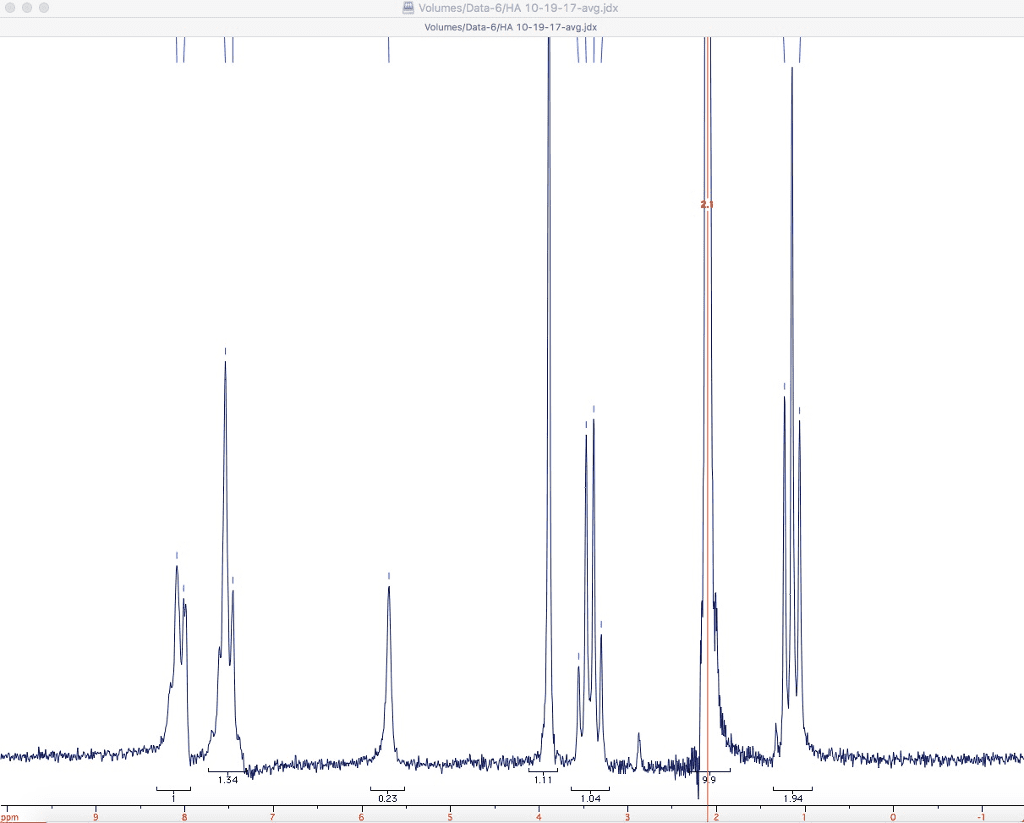CHE 211 Study Guide - Midterm Guide: Methyl Group, Chloroethane, Spectroscopy

Organic Chemistry 2: NMR Spectroscopy
Spin-Spin Splitting and 1H NMR (Multiplicity)
In dichloroethane, we have 2 sets of non-
equivalent protons (similar to chloroethane);
and for both chloroethane and dichloroethane,
we do not see just one peak, but rather we see
groups of peaks with each group of peaks
coming from one of the sets of non-equivalent
protons
This type of splitting is called spin-spin
coupling or multiplicity and it is caused by the
presence of vicinal (neighboring) protons (protons on an adjacent carbon atoms that are
non-equivalent to the protons of interest)
When the signal appears as single peak it is called a singlet
When a signal is split into two peaks (such as the methyl protons above), it is called a
doublet
If a signal is split into three peaks, it is called a triplet
And finally, if the signal is split into four peaks (such as the methine proton above), it is
called a quartet
It is possible to have a signal split into more than four peaks and in these cases we
simply call the groups of peaks a multiplet
The number of peaks that the signal is split into for the proton of interest is known as its
multiplicity
❖ n + 1 Rule:
For compounds, we can figure out their spin-spin splitting in peaks in NMR for a
particular proton, but counting the number of neighboring non-equivalent
protons (n) and then add one
Whee = the ube of o-equivalent neighboring protons to the proton of
interest
Allows us to predict the multiplicity in an NMR spectrum
θ For dichloroethane, the 3
protons on the methyl group are
said to be equivalent and they see
ONE neighboring non-equivalent
proton on an adjacent carbon
therefore, the signal for the methyl
protons will be split into 1+1 = 2
peaks (doublet)
find more resources at oneclass.com
find more resources at oneclass.com
Document Summary
This type of splitting is called spin-spin coupling or multiplicity and it is caused by the presence of vicinal (neighboring) protons (protons on an adjacent carbon atoms that are non-equivalent to the protons of interest) When the signal appears as single peak it is called a singlet. When a signal is split into two peaks (such as the methyl protons above), it is called a doublet. If a signal is split into three peaks, it is called a triplet. And finally, if the signal is split into four peaks (such as the methine proton above), it is called a quartet. It is possible to have a signal split into more than four peaks and in these cases we simply call the groups of peaks a multiplet. The number of peaks that the signal is split into for the proton of interest is known as its multiplicity.




